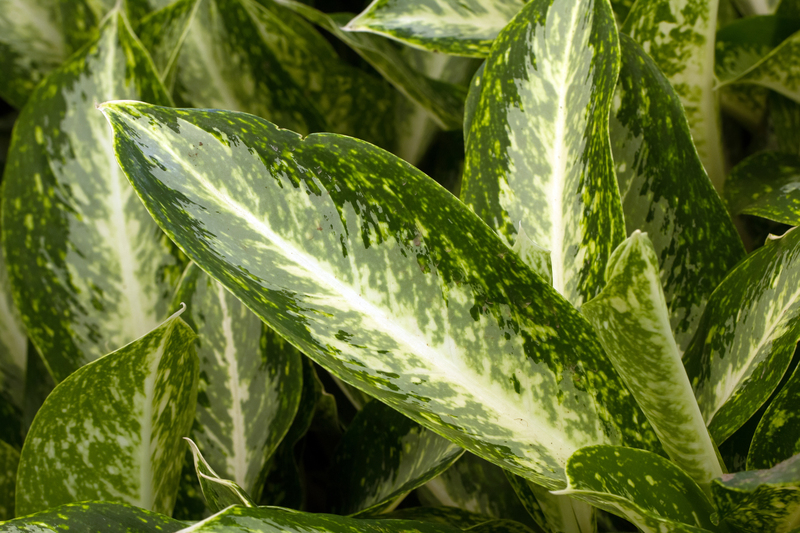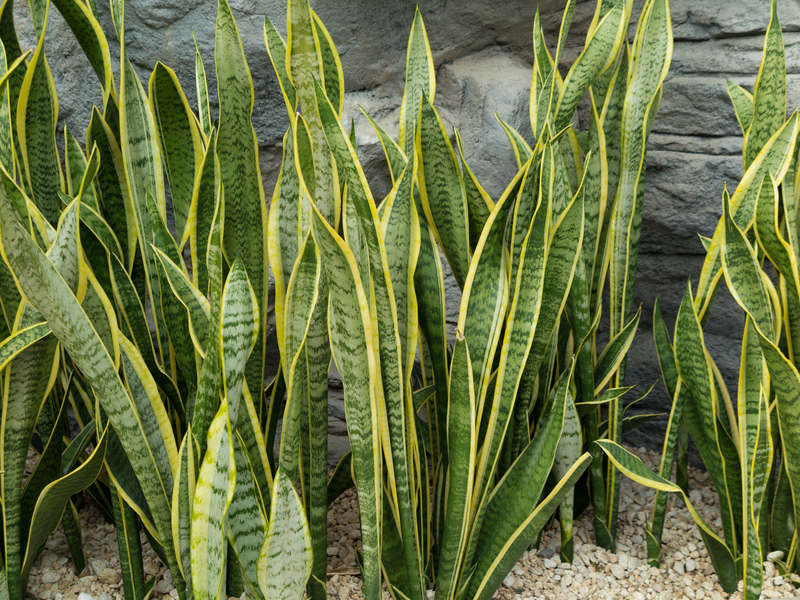3 Key Strategies for Effective Weed Suppression
Posted on 13/09/2025
3 Key Strategies for Effective Weed Suppression
Weeds are more than just garden nuisances--they compete with crops and ornamentals for water, sunlight, and nutrients, effectively hindering plant health and reducing yields. A thoughtful, multifaceted approach to weed management is crucial for achieving a thriving, weed-free garden or landscape. In this comprehensive article, we dive deep into the top three strategies for effective weed suppression, integrating science-backed practices and sustainable solutions to help you stay a step ahead of unwanted plant invaders.

Why Is Weed Suppression So Important?
A proactive approach to weed control isn't just about aesthetics. Weeds harbor pests, spread diseases, and can even disrupt delicate ecosystems. In vegetable gardens, lawns, agricultural fields, or flower beds, effective weed suppression means healthier plants, less need for chemical interventions, and higher crop or floral yields. The right control techniques can:
- Increase plant productivity
- Reduce reliance on herbicides
- Maintain soil health
- Boost biodiversity
- Save time and labor in the long run
Let's explore the three key strategies for optimal weed suppression and discover actionable steps for gardeners, landscapers, and farmers alike.
1. Prevention through Mulching and Ground Cover
Block Light, Block Weeds
One of the simplest but most effective ways to suppress weeds is to *deny them sunlight*. Without light, most weeds cannot germinate or grow. This is where mulching and ground cover come into play.
Choosing the Right Mulch Material
Mulch acts as a natural barrier, shading the soil and preventing weed seeds from sprouting. There are two main categories:
- Organic mulches - shredded leaves, grass clippings, straw, bark, wood chips, compost. These break down over time, improving soil health and adding nutrients.
- Inorganic mulches - black plastic, landscape fabric, stones, or gravel. These are long-lasting and effective but do not improve the soil.
Spread mulch 2-3 inches deep around plants, ensuring it's not piled against stems or trunks. This creates a physical barrier, stabilizes soil moisture, and moderates soil temperatures--all of which benefit your desired plants while suppressing weeds.
Employing Living Ground Covers
*Living ground covers*, such as creeping thyme, clover, or low-growing perennials, can also outcompete weeds by occupying bare soil and offering similar shading benefits as mulch. In vegetable beds, cover crops like buckwheat or hairy vetch can fill niches where weeds might otherwise take hold during off-seasons.
- Suppress weed growth naturally: Dense ground covers block light and compete for nutrients.
- Promote biodiversity: Attract pollinators and beneficial insects while reducing maintenance needs.
- Prevent soil erosion: Protect valuable topsoil from washing or blowing away.
By integrating both mulches and living covers, you establish the first line of defense in long-term weed control.
2. Timely and Targeted Physical Weed Removal
Weed Early, Weed Often
No matter how effective your preventive methods are, some weeds will inevitably appear. The key to reducing their impact is timely and targeted removal. Weeds are most vulnerable when they're young and have not set seed. Here are several best practices:
Best Techniques for Manual Weed Suppression
- Hand pulling: Ideal for new, shallow-rooted weeds, especially after rain or watering when the soil is soft.
- Use of weeding tools: Hoes, dandelion diggers, or hand forks make quick work of larger areas or tough perennials.
- Cutting: For persistent perennial weeds, cut at ground level to deplete root reserves over time.
Be vigilant--make a habit of inspecting your garden or field regularly, especially in early spring and after heavy rainfall. Prompt action prevents weeds from flowering and producing seeds, reducing future weed populations by thousands.
Smother with Solarization or Sheet Mulching
For large, overgrown areas, solarization or sheet mulching are highly effective:
- Solarization: Cover ground with clear plastic during hot months for 4-6 weeks. The heat "bakes" weed seeds and pathogens.
- Sheet mulching: Layer cardboard or newspaper, then add mulch or compost on top for several months. This starves weeds of light and oxygen.
These methods are sustainable, chemical-free, and particularly useful when reclaiming weedy areas or preparing new garden beds.
Limit Soil Disturbance
Frequent tilling or digging can actually increase weed problems by bringing dormant seeds to the surface. Where possible, adopt a no-till or low-till approach to your soil management. If digging is unavoidable, mulch immediately afterward to prevent a fresh flush of weeds.
3. Enhance Plant Competition for Sustainable Weed Management
Dense, Healthy Plantings Leave No Room for Weeds
Stressed, sparse, or widely spaced plants provide a perfect opportunity for weeds to take root. One of the most eco-friendly weed suppression strategies is to enhance competition with:
- High-density plantings: Plant closely enough so leaves quickly shade the soil, but not so close as to cause plant stress.
- Interplanting and crop rotation: Alternate different plant families and varieties to confuse weeds, break pest cycles, and keep soil covered.
- Healthy soil management: Fertilize and amend soil as needed so desired plants outcompete opportunistic weeds.
A vigorous, healthy stand of crops or ornamentals is your best defense--nature's way of crowding out weeds.
Companion Planting and Intercropping
Planting fast-growing cover crops or "living mulches" between rows of vegetables not only suppresses weeds but also provides habitat for pollinators and beneficial bugs. For example:
- Grow lettuce or spinach among taller tomatoes or peppers--maximizing space and blocking weeds.
- Interseed clover in lawns or perennial borders--it fixes nitrogen while crowding out weedy invaders.
Select Competitive Plant Varieties
Some plant varieties naturally shade the ground or establish quickly enough to blank out weedy competition. When possible, choose vigorous cultivars or those bred for quick ground cover, especially in problem-prone areas.
The Integrated Approach: Combining Weed Suppression Methods
The most successful weed control strategies don't rely on a single method. Instead, they integrate multiple techniques to create a robust, self-sustaining barrier against problem weeds. For example:
- Use thick mulch and ground covers, then follow up with periodic hand weeding as needed.
- Rotate crops each year to break weed and pest cycles.
- Plant densely and maintain soil fertility for a competitive crop stand.
- Monitor regularly and remove young weeds before they threaten to set seed.
Additional Tips for Long-Term Weed Suppression
- Minimize bare ground: Any bare patch is an open invitation for weeds to invade.
- Avoid bringing in contaminated soil or compost: Only use weed-free or well-composted materials.
- Edge garden beds and lawns: Physical barriers like edging stones or metal strips can prevent perennial weeds from creeping in.
- Remove weed flowers promptly: Even tough perennial weeds can be weakened by removing seed heads before they spread.
- Be patient and persistent: Building a weed-free garden or productive field is a multi-year effort--but consistency pays off.

FAQs on Effective Weed Suppression
What is the best time for weed removal?
Early spring is ideal. Weeds are small and easier to pull, and the soil is generally moist. However, regular inspection and removal throughout the season are necessary, especially after rainfall or irrigation.
Do chemical herbicides play a role in weed suppression?
While herbicides can be effective for serious infestations, a sustainable weed suppression strategy minimizes chemical use. Focus instead on prevention, cultivation, and healthy plant competition whenever possible.
Can weeds be beneficial for the garden?
Some weeds provide habitat for pollinators or can indicate soil health issues (like compaction or depletion). However, they should never be allowed to outcompete crops or ornamentals where productivity or aesthetics are priorities.
Conclusion: Achieving Sustainable and Lasting Weed Suppression
Effective weed suppression is not a one-time effort but an ongoing, integrated process that combines prevention, regular management, and strategic planting. By incorporating the three key strategies--mulching and ground cover, timely physical removal, and enhancing plant competition--you create a living, resilient system where desired plants thrive and weeds struggle to gain a toe-hold.
Discover the difference a proactive, holistic weed suppression program can make in your garden or landscape. Healthier plants, less time spent on weeding, reduced chemical use, and greater yields are all within reach. Start implementing these proven strategies today and enjoy a more vibrant, productive, and weed-resistant environment--season after season.

